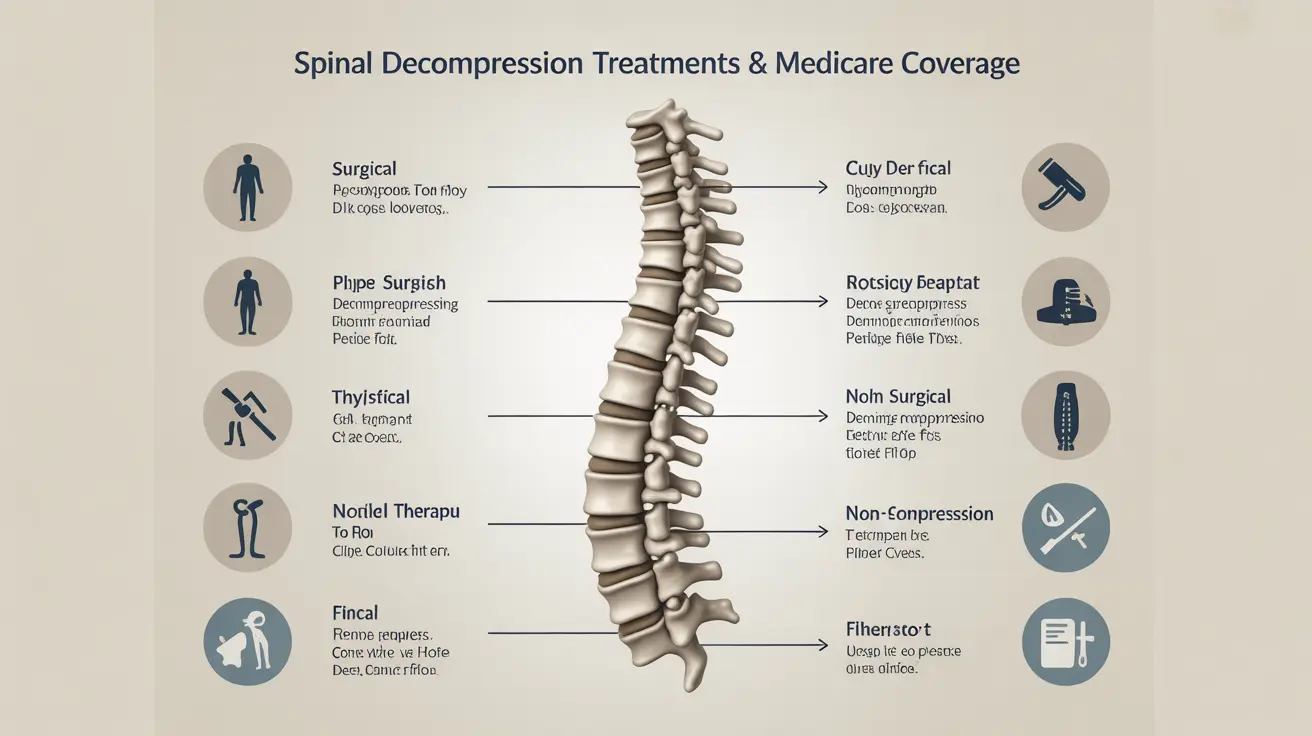Understanding Medicare coverage for spinal decompression treatments can be complex, as coverage varies depending on the type of procedure and medical necessity. This comprehensive guide will help you navigate the different types of spinal decompression treatments and their coverage under Medicare.
Types of Spinal Decompression Treatments
Spinal decompression treatments fall into two main categories: surgical and nonsurgical approaches. Each type has different coverage implications under Medicare.
Surgical Spinal Decompression
Medicare typically covers surgical spinal decompression when deemed medically necessary. These procedures include:
- Laminectomy
- Discectomy
- Foraminotomy
- Spinal fusion
- Percutaneous image-guided lumbar decompression (PILD)
Coverage is generally provided under Medicare Part A for inpatient procedures and Part B for outpatient surgeries, subject to deductibles and coinsurance.
Nonsurgical Spinal Decompression
Nonsurgical spinal decompression therapy, which uses mechanical traction devices, generally isn't covered by Original Medicare. This treatment is considered alternative or complementary medicine, and Medicare typically doesn't cover these services.
Medicare Coverage Requirements
To qualify for Medicare coverage of spinal decompression surgery, several conditions must be met:
- Documented medical necessity
- Failed conservative treatment attempts
- Clear diagnostic imaging showing spinal compression
- Recommendation from a qualified healthcare provider
- Treatment at a Medicare-approved facility
Understanding PILD Coverage
Percutaneous image-guided lumbar decompression (PILD) has specific coverage requirements under Medicare. This minimally invasive procedure is covered only when performed as part of an approved clinical study or trial, and patients must meet strict eligibility criteria.
Alternative Treatments Covered by Medicare
Medicare does cover several alternative treatments for spinal conditions, including:
- Physical therapy
- Chiropractic adjustments (limited to manual manipulation of the spine)
- Pain management injections
- Prescribed medications
- Occupational therapy when necessary
Medicare Advantage and Supplemental Coverage
Medicare Advantage (Part C) plans may offer additional coverage for spinal treatments not covered by Original Medicare. These plans can include coverage for:
- Additional physical therapy sessions
- Alternative treatment options
- Lower out-of-pocket costs for covered procedures
- Extended post-operative care services
Frequently Asked Questions
Does Medicare cover spinal decompression therapy, and if so, under what conditions?
Medicare covers surgical spinal decompression when deemed medically necessary and performed by approved providers. Nonsurgical spinal decompression therapy typically isn't covered under Original Medicare.
What is the difference between nonsurgical and surgical spinal decompression, and which does Medicare cover?
Surgical decompression involves operative procedures to relieve pressure on spinal nerves, while nonsurgical decompression uses traction devices. Medicare typically only covers surgical procedures when medically necessary.
How does percutaneous image-guided lumbar decompression (PILD) work, and when is it covered by Medicare?
PILD is a minimally invasive procedure that removes tissue causing pressure on spinal nerves. Medicare covers PILD only when performed as part of an approved clinical study or trial.
What are the alternative treatments for spinal stenosis that Medicare covers besides spinal decompression?
Medicare covers various alternative treatments including physical therapy, chiropractic care (limited to manual manipulation), pain management injections, and prescribed medications.
Can you get partial reimbursement for spinal decompression therapy through Medicare Advantage or supplemental insurance plans?
Medicare Advantage plans may offer additional coverage for spinal treatments not covered by Original Medicare. Coverage varies by plan, so it's important to check your specific policy details.




